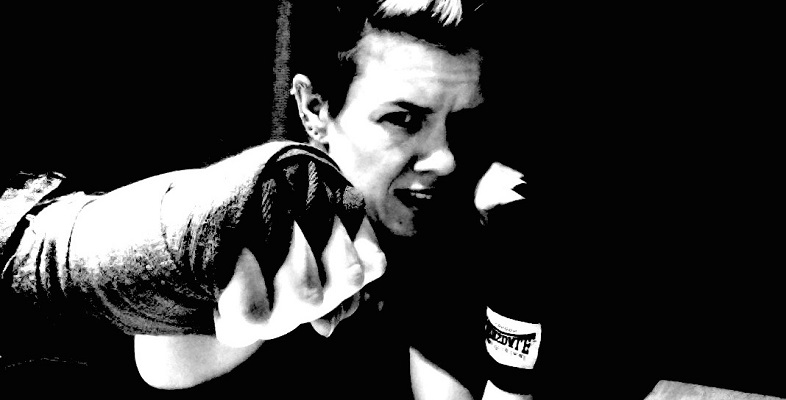2 Gender discrimination in sport
You will start your exploration of gender discrimination in sport by reflecting on your knowledge of male and female athletes, in the activity below.
Activity 2 Guess who
Without using the internet, see if you can match the following athletes with their sports.
Men
Using the following two lists, match each numbered item with the correct letter.
Usain Bolt
Wayne Rooney
Andy Murray
Tom Daley
Bradley Wiggins
David Haye
Chris Robshaw
Louis Smith
Pete Reed
Alastair Cook
a.Rugby
b.Cricket
c.Football
d.Rowing
e.Cycling
f.Boxing
g.Athletics
h.Diving/swimming
i.Gymnastics
j.Tennis
- 1 = g
- 2 = c
- 3 = j
- 4 = h
- 5 = e
- 6 = f
- 7 = a
- 8 = i
- 9 = d
- 10 = b
Women
Using the following two lists, match each numbered item with the correct letter.
Shelly-Ann Fraser-Pryce
Steph Houghton
Laura Robson
Rebecca Adlington
Victoria Pendleton
Marianne Marston
Katie McLean
Beth Tweddle
Katherine Grainger
Charlotte Edwards
a.Cycling
b.Diving/swimming
c.Cricket
d.Boxing
e.Football
f.Rugby
g.Rowing
h.Gymnastics
i.Tennis
j.Athletics
- 1 = j
- 2 = e
- 3 = i
- 4 = b
- 5 = a
- 6 = d
- 7 = f
- 8 = h
- 9 = g
- 10 = c
How many did you match correctly and why do you think this was (e.g. consider the type of sport, exposure to female/male sport)?
Discussion
It is likely that you knew more of the male athletes than the female athletes. There are several reasons why this might be the case, but one reason could be due to gender differences in media coverage. Research has been carried out by Women in Sport (formerly the Women’s Sport and Fitness Foundation), for example – the leading charity dedicated to transforming sport for the benefit of every woman and girl in the UK – and their report, Women in Sport (2015, p. 3), produced the following figures on women’s media coverage:
- Women’s sport makes up 7% of all sports media coverage in the UK.
It gets:
- just over 10% of televised sports coverage
- 2% of national newspaper sports coverage
- 5% of radio sports coverage
- 4% of online sports coverage.
Additionally, women’s sport received just 0.4% of reported UK sponsorship deals in sport between 2011 and 2013 (Women in Sport, 2015). This imbalance in sponsorship gives further exposure to men’s sport. You will now continue to investigate the gender imbalance in sport, and its potential implications for how women’s sports are valued.
Activity 2 highlights some of the gender imbalance evident in media sports coverage. This gender imbalance could be thought of as a form of discrimination. Gender discrimination is defined as ‘a situation in which someone is treated less well because of their sex’ (Cambridge Dictionary Online). Under the UK Equal Opportunity Act (2010), which replaced the Sex Discrimination Act (1975), it is against the law to discriminate against, bully or treat someone unfairly in sport because of a personal characteristic (e.g. race, sex or disability). For example, a sports team not selecting someone to coach their team because that person is a woman, or a sports club refusing to provide the same range of sporting equipment to both a women’s and a men’s football team would be classed as discrimination. Although the terms ‘sex’ and ‘gender’ are often used interchangeably, there are subtle differences between them. These are explained in the following key terms and definitions [Tip: hold Ctrl and click a link to open it in a new tab. (Hide tip)] .
Having now examined an example of gender discrimination, in the next activity you will reflect on your own experiences of gender discrimination.
Activity 3 Sharing experiences
Think about whether you have experienced any form of gender discrimination connected to your involvement in sport or exercise. Remember that both women and men can be discriminated against.
Write down your experiences in note form, using the ‘prompt’ questions below as a guide.
- What was the situation?
- How did it make you feel?
- Why do you think it occurred?
- How do you think this could have been prevented?
If you can’t think of any personal experiences, think about why you haven’t experienced any discrimination and/or think of an incident you might have witnessed. Also, consider whether you might have been an unintentional perpetrator of discrimination.
Reflect on your experiences and consider whether you feel that gender discrimination is a significant issue in sport and exercise.
Discussion
Reflecting on your own experiences is a good way to construct a deeper and more meaningful way of understanding and articulating knowledge. You may have spoken to others about their own experiences and this may have encouraged you to consider different perspectives. Sometimes, the dynamic process of reflection can also challenge existing theoretical perspectives. An awareness of gender inequality can provide you with a base from which to challenge discrimination as a whole (e.g. on the basis of disability, race or sexuality).
